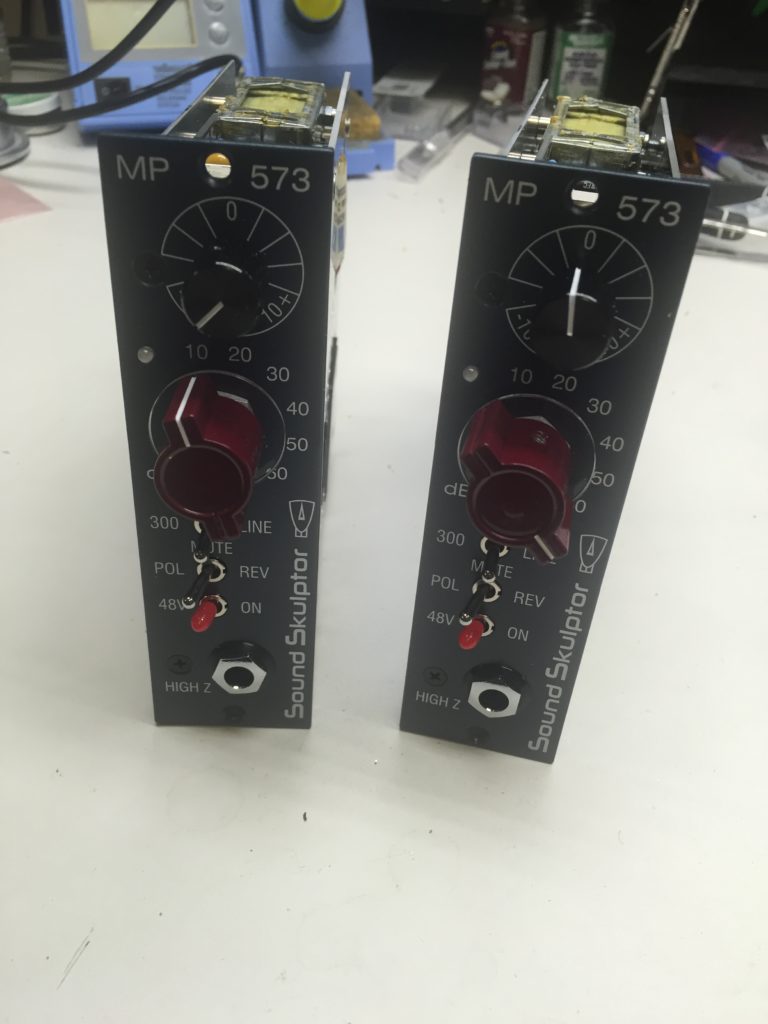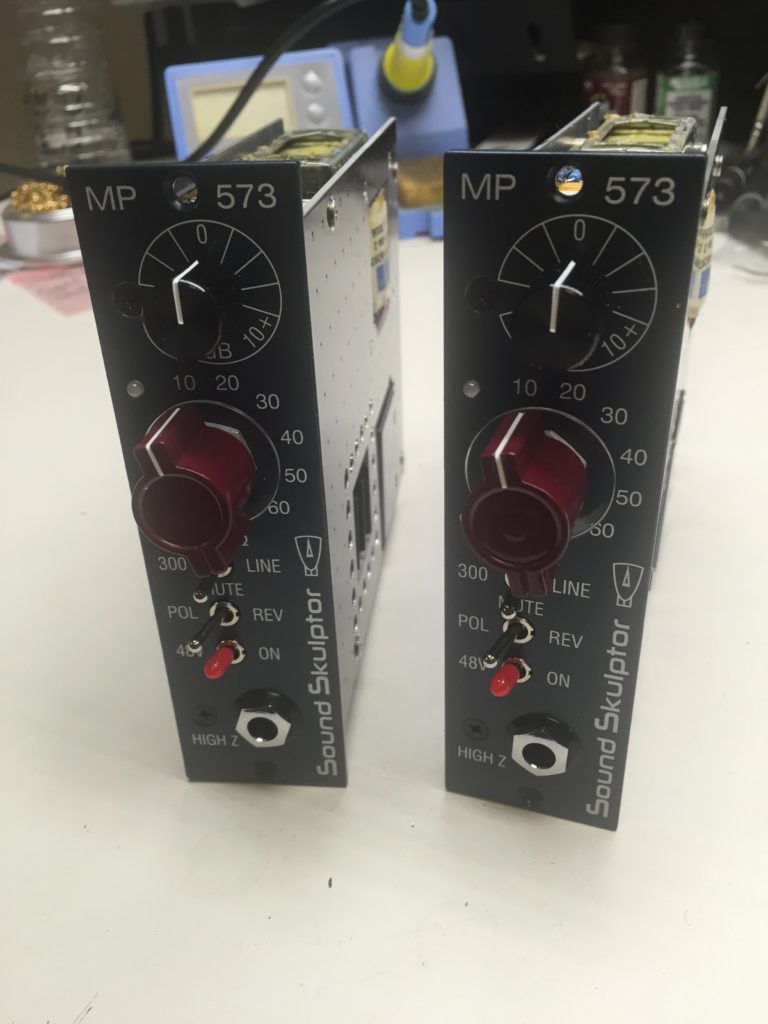Back to building preamps! Joining the ranks in the rack this week are a pair of MP573s from French audio designers SoundSkulptor.
The MP573 is SoundSkulptor’s take on the venerable Neve 1073 preamp.
Introduced in 1970, Rupert Neve created the 1073 module for use as a combination preamp/EQ module for Neve’s A88 mixing console. The 1073 was never intended to be used or sold as an individual unit. Rather, as the consoles for which the 1073 were designed began to be retired or mothballed at the beginning of the digital era, some engineers realized they would miss the sound of the 1073. As also happened with the API console modules that later spawned the 500 series “lunchbox” format, enterprising engineers began pulling the 1073 modules from the old consoles, and using them as outboard gear in their digital productions.
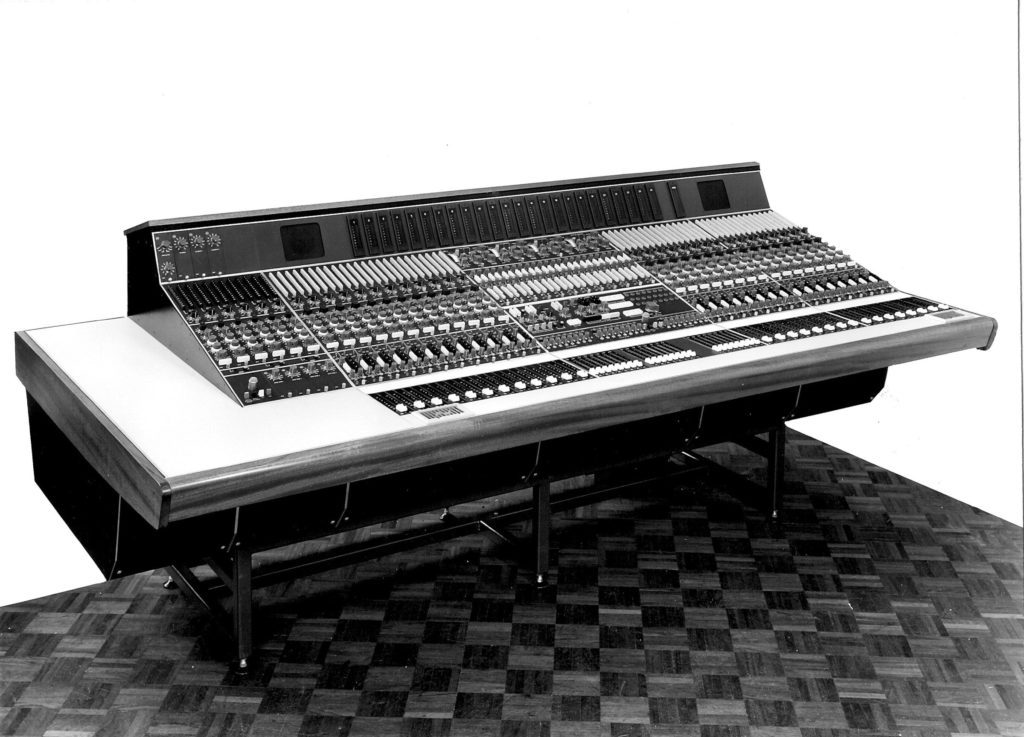
The 1073 has been used on any number of hit records over the past 30+ years, whether rock, hip-hop, pop, or classical. The preamp gives you a big, fat, round, forward sound, heavily colored by the design of the transformer in the preamp, which seems to add subharmonics to the incoming signal. A 1073 is said to be the sound of “big iron.”
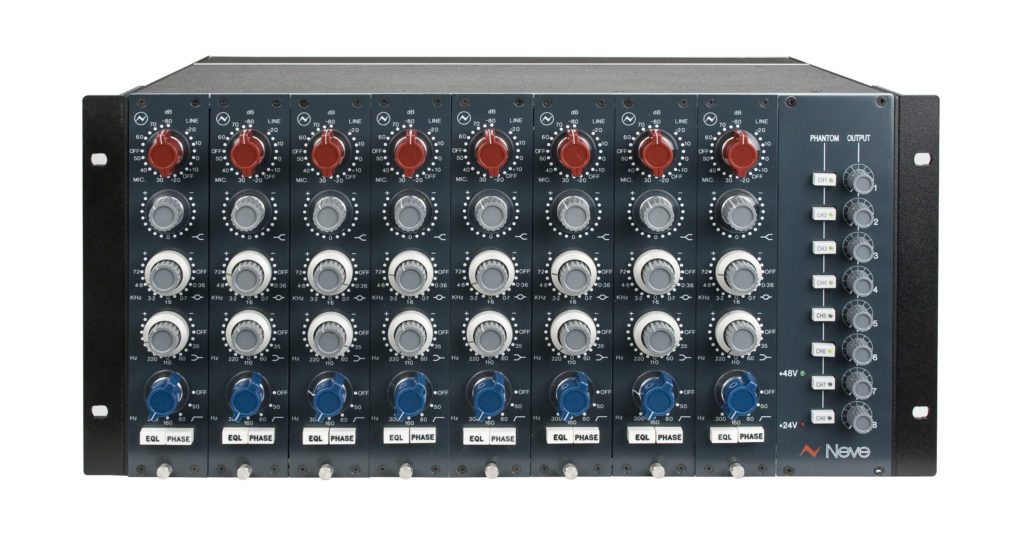
So the Neve 1073 is widely revered. It follows, not surprisingly, that it is also widely cloned. As I was investigating DIY kits from various manufacturers, one of the things that really appealed to me about the SoundSkulptor version was the concerted attempt to make the “look and feel” of the MP573 resemble the “trade dress” of the original without being a complete knock-off. Including “73” in the model number is one way to do that, of course (yes, like the LA2A, the 1176, and the 47, to name a few, “1073” is one more number that audio engineers instantly recognize as belonging to a specific piece of studio equipment). But the original Neve 1073 is also a distinctive blue color, somewhere between battleship grey and powder blue. And most recognizably, the 1073 sports a distinctive, red, hammerhead shark-shaped gain knob that is unique among preamp designs, and very easy to spot from across the room.
The MP573 is a similar shade of “Neve blue”, and includes the distinctive hammerhead gain knob. It’s the kind of visual shorthand that one spots right away, and which I really appreciate in a crowded 500 series rack. I’ve already had a great experience building SoundSkulptor’s MP566 mic preamps, so I consider SoundSkulptor a “known variable” and I’m happy to have a crack at building a couple of their other preamp kits.
As it sits, it’s not fair to exactly call it a “1073 clone,” though, because the MP573 doesn’t include the EQ section from the original. No one — not SoundSkulptor, nor Neve, for that matter (who have since introduced their own 500 series version of the 1073) — has managed to shoehorn all the electronics necessary to reproduce the full functionality of an original 1073 into the space afforded by a 500 series module. It doesn’t help space matters that Neve’s modern 500 series version of the 1073, along with the SoundSkulptor version, include a DI jack and circuitry that were not part of the original.
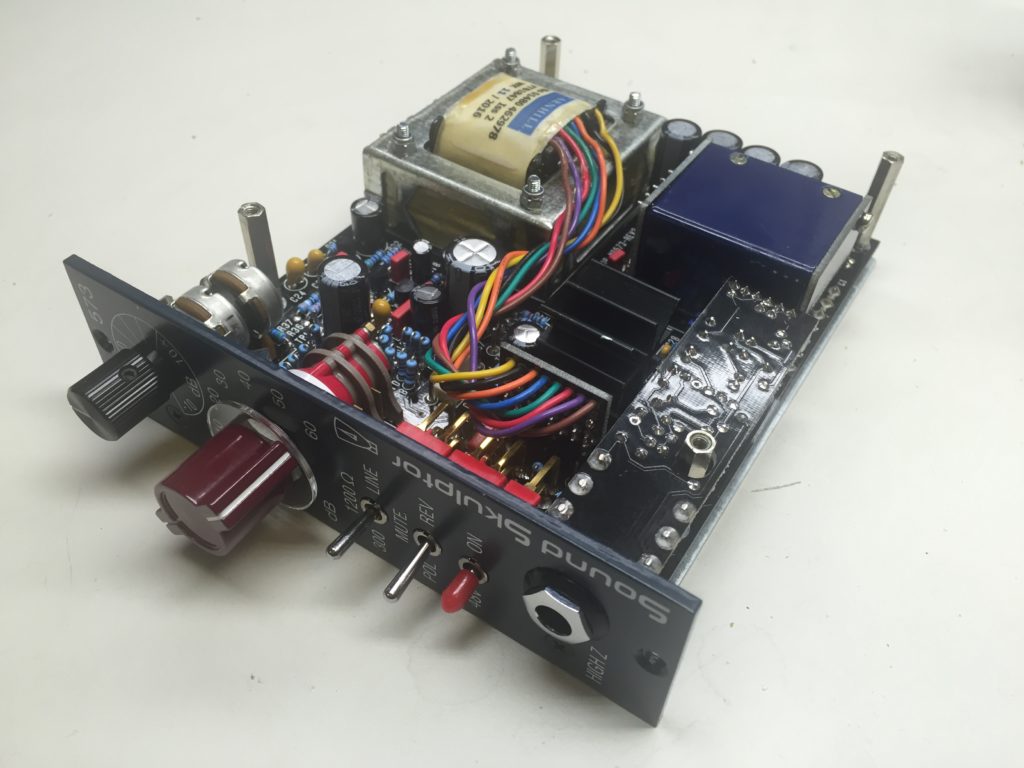
Neve, SoundSkulptor, and various other DIY kit makers have attacked the space problem in a similar fashion: by offering a second 500 series module that offers the 1073’s EQ section controls. The two modules link up between the input & output sections of the preamp, offering users who want the sound of the 1073’s EQ the opportunity to have it in their signal chain.
Myself, I keep thinking that one of these days in my recording adventures, I’m going to find myself suddenly wanting to aggressively EQ my signals as I’m “recording to tape” in Pro Tools, but I have yet to find myself wanting to do that on any kind of a regular basis. Maybe roll the bottom end off, sure, but usually the microphones we’re using have a switch to do that, so it’s not a job I need the preamp to handle for me anyway. I don’t usually have a good enough idea about how what I’m recording will sit with the rest of the mix to want to hard-commit to an EQ setting until I’m a little farther down the road. So not having the EQ section is something of a non-issue for me. Still, if the building bug ever hits and I feel like trying my hand at building an EQ unit, SoundSkulptor’s companion EQ573 would be a logical first choice to extend the capabilities of this preamp.
These kits were very straightforward to build, without any particular surprises. Like the MP566 units I previously built, the MP573 also includes the same type of screw-on cover to protect the circuit board.
I’m not strictly sure the cover is necessarily in this case; SoundSkulptor’s MP566 includes the extra panel to protect the user from accidentally touching the potentially lethal high-voltage connections powering the vacuum tube. While there are still some potentially dangerous voltages in a preamp that includes phantom power circuitry, most DIY kits don’t include a cover like this, so I don’t believe it’s completely necessary, strictly speaking. Still, having a nice solid wall on the top side of the module, even if it only serves to ensure that you don’t accidentally snag a capacitor on the adjacent module while installing the unit, is not a bad thing.

